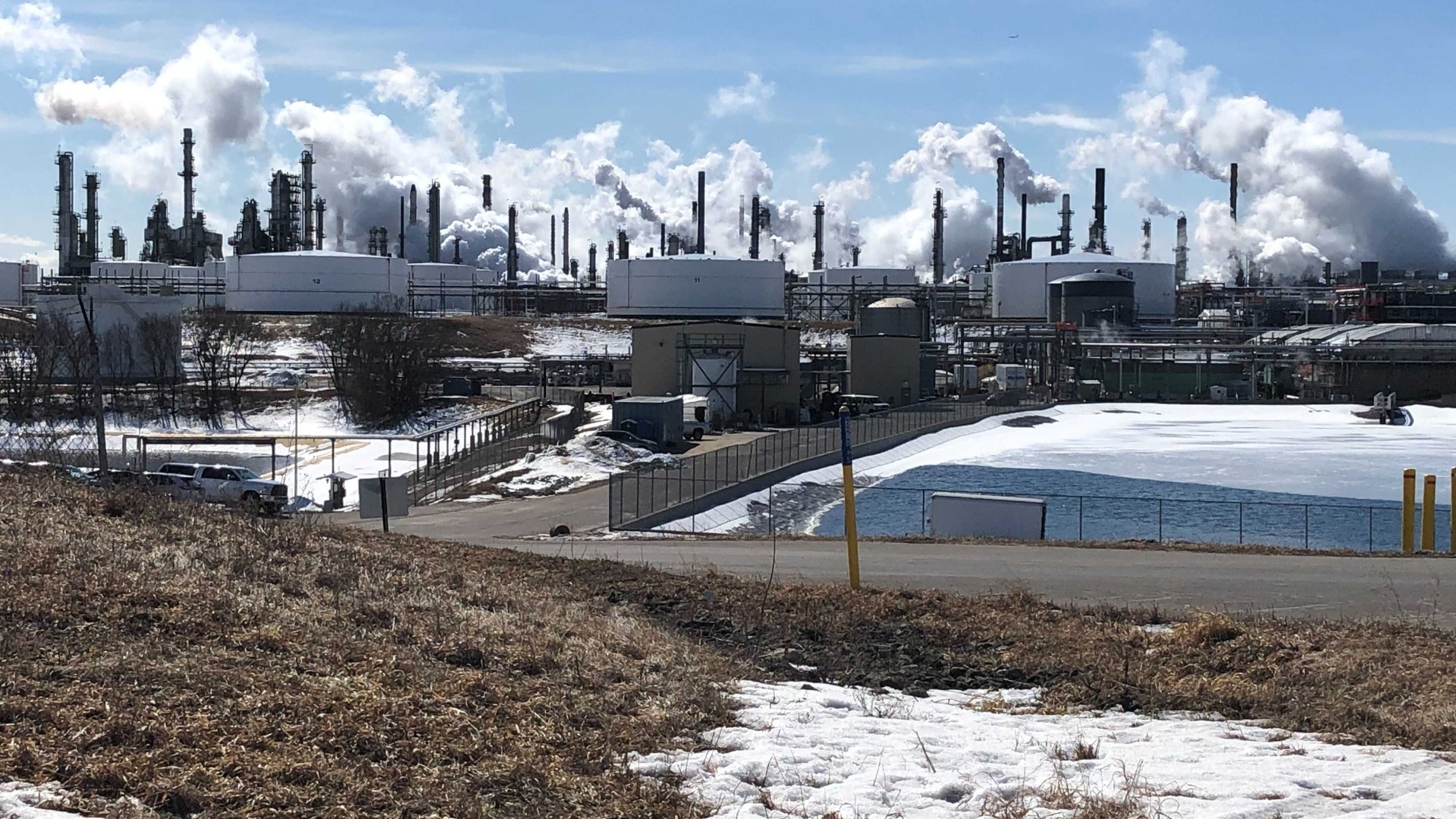Minnesota greenhouse gas emissions down 23% since 2005, on track to meet climate goals

Flint Hills Resources-Pine Bend Refinery in Rosemount. (FILE/KSTP-TV)
A new state report says Minnesota’s greenhouse gas (GHG) emissions have dropped by 23% between 2005 and 2020, putting the state on track to meet its climate goals for the first time.
The Minnesota Pollution Control Agency (MPCA) and Minnesota Department of Commerce report was submitted to the Minnesota Legislature Tuesday and offered hope that the state could reach its goal of reducing emissions by 30% by 2025.
According to the report, the state’s biggest GHG emissions decline is in electricity generation, which has seen a 54% reduction in emissions from 2005-20. The MPCA credits the state’s electricity generation sector moving toward renewable energy and away from coal as the main driver in that reduction.
The agency says the state’s biggest source of GHG emissions is still the transportation sector, which accounts for a quarter of Minnesota’s emissions.
“Industry policy shifts, better agricultural practices, and personal behavior changes during the pandemic provided Minnesota with a course correction, but it is essential that we double-down on climate actions that can keep us on track,” MPCA Commissioner Katrina Kessler said in a statement. “The Walz-Flanagan Administration’s Climate Action Framework and One Minnesota budget make smart investments and policy changes to further advance our state’s climate goals.”
“This report shows we have successes to celebrate and we have a clear path forward with the Climate Action Framework. We now have a historic opportunity for investments in clean energy, from the billions in federal funds and actions being taken by the state Legislature, to the collective efforts happening across this state by individuals and businesses, schools and other local governments, communities of all types and sizes, and our tribal nations in Minnesota,” Commerce Commissioner Grace Arnold added.
The departments also noted changes caused by the COVID-19 pandemic, which led to a significant drop in GHG emissions in 2020. However, officials say more data from future years will show whether the trends continue.
In addition to the state’s goal of reducing GHG emissions by 30% by 2025, Minnesota also is aiming to see an 80% reduction by 2050, as laid out by the state’s 2007 Next Generation Energy Act. However, those benchmarks were actually raised last year by the Minnesota Climate Action Framework, which pushed those goals to a 50% reduction by 2030 and being net-zero by 2050.
Click here to see the full report.